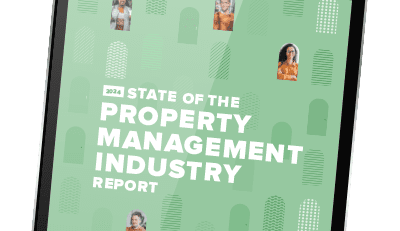Editor’s Note: The following is a conversation from the second episode in the video series, The 2020 Industry Report Explained: Be the Local Market Expert, which features interviews with Robin Young, Sr. Researcher at Buildium. In this session, we’ll cover the regional trends that are impacting property managers in their backyards—from Buildium’s 5th Annual Industry Report in partnership with the National Association of Residential Property Managers (NARPM).
Chart of Accounts
Want clearer, cleaner books? What about a more useful view into your properties or just easier accounting in general?
Get the GuideEpisode 1: The Property Advisor
Episode 3: Tech-Enabled and Human-Centric
Tony: Tony from Buildium here, the software that helps property managers control the chaos, sharpen their operations, and, ultimately, grow their business. Thanks for joining us for this three-part video interview series: The 2020 Industry Report Explained.
Today, I’m talking with Robin Young, Senior Researcher here at Buildium. She’s really the person behind the scenes of the report who’s responsible for creating it and pushing it past the finish line each year. In this series, we’re going to break down the findings and distill the key trends that we identified.
Now, in the first video, we’ve talked about how the definition of property management has shifted. But in this next video, what we’re going to talk about is really the local angle and why local expertise is so important.
Tony: Why is local expertise critical for property managers going into 2020?
Robin: There are all these regulations that affect the rental market being passed in cities across the country. Rents and vacancy rates are changing, as they always are. But as we reach the end of this economic cycle, it’s really important to watch what’s going on from month to month. And expectations from renters and owners have really shifted. These are all things that are happening on a local, regional, and national level, and it can be hard to keep track of all of that. And today’s owners understand that, too. They want property managers who have expertise about profitability in their specific area.
Tony: Yeah, we know that a lot of property managers are feeling that every day.
Could you tell me a little bit about the push and pull that you saw in the primary and secondary markets?
Robin: This is my personal favorite trend that I love to talk about! Since 2016, I’ve been watching as the population has been shifting from the country’s biggest cities to some really surprising small and mid-sized cities. For example, I analyzed Census data and found that New York City, L.A., and Chicago are each losing hundreds of residents per day, while Phoenix, Dallas, and other up-and-coming cities are gaining over a hundred residents a day. Migration has actually been on the decline for decades. So it’s not that people are moving more—but that actually means that when people do choose to move, especially across the country, we should really be paying attention.
Tony: So, that’s interesting information for sure, especially for those property managers who are in primary markets like L.A., Boston, New York, but then also the markets that are receiving those new residents like Austin, Vegas, etc.
What are the markets that are most thriving and why?
Robin: Sure. The reason that some markets are thriving is because others are stagnating; and the ones that are stagnating, as I mentioned, are overheated primary markets—I always think of New York City. And because population growth is stagnating there, the rental market is too. When demand goes down, everything kind of slows down.
So, where we’re at in the current real estate cycle, investors have been finding much higher yields in some unexpected places. But this is something that’s rapidly shifting, which is one of the reasons why staying on top of what’s happening in your local market matters so much. From year to year, the cities with the best cap rates completely change. In past years, we would have recommended investing in Seattle, Austin, Nashville, Denver—and these are places that have become so popular so quickly for investors looking for high cap rates right at the end of the real estate cycle that now they’re really not so profitable anymore.
Some of the cities that I had my eye on this year were Boise, Las Vegas, Phoenix, Minneapolis, and Dallas. Those are my top picks for 2019, but I’ll actually be compiling next year’s list and releasing it in January.
Tony: It’s incredible how quickly those cap rates have changed for investors. If you’re late to the punch, the opportunity’s already gone.
What did these fastest-growing cities have in common? What makes them appeal to both residents and investors?
Robin: So, the interesting thing is that these cities have certain characteristics that do appeal to not only residents and investors, but also to small businesses. So, some of these characteristics that I’ve found—one is really strong job growth numbers, but it’s important that that not be in just one industry. We always think of Detroit as the perfect example of that, where they had incredible growth, but it was just in one industry. And when that bottomed out, the whole city did too. So, you want strong job growth, and often an emerging tech sector, which is something that basically brings fresh blood to a city, and businesses follow.
The other characteristic that I look for is a healthy balance between price growth and affordability. So, this is what makes the city appealing to both residents and investors. The cost of living has to remain relatively affordable for residents, but then investors also want that price growth. And the reason that that’s more balanced in secondary markets and primary markets is because the supply of housing doesn’t have these huge constraints on it. When you think of Boston, there’s only so much room to keep building.
So when supply can’t keep up with demand, prices go up—and so, in these smaller cities, that remains a lot more balanced.
Tony: Yeah, because of these market conditions and all of the growth happening, governments sometimes have to step in. And they’re doing that right now.
What are the major regulatory trends that you’re seeing impact local rental markets?
Robin: The difficult thing here is that governments do need to step in to do something about the affordability crisis, but it’s really unlikely that a single policy is going to be able to solve it. So, we’re seeing rent control come up a lot. It passed in the last year in New York City, Oregon, and just last month in California. And a lot of people worry that it makes property ownership unprofitable and disincentivizes people from doing capital improvements. And it also doesn’t address the need for more housing supply. So there are real pros and cons to rent control that cities are still figuring out.
The other big policy has to do with zoning. Minneapolis was the first city to ban single-family zoning across the whole city—and increasing housing density is believed to make a big difference in making prices more affordable. But the thing is that there’s no constraints on how much these new units can cost. And so theoretically, they could all be built at the upper end of the market.
So, like I said, no single policy is likely to be able to fix this. The answer is going to be really complicated in the end, but we’re hoping for a solution that can help both renters and property owners. And in the meantime, property managers have a real opportunity to market themselves as experts here. Property owners are anxious about these things, and they need an expert to help them navigate the conditions in their own city. And so this is another way that local market expertise can really help property managers market themselves.
Tony: That’s so true. And those markets, of course, feel those changes and the property managers in them are dealing with them and they’re staying on top of them, because they have to.
How are resident and owner preferences changing?
Robin: This is another interesting trend that I’ve been following a lot over the last couple of years, and it’s not just that their preferences have changed—it’s that who residents and owners are has shifted. Property managers are serving a broader range of customers than ever, and so they’re really finding that a one-size-fits-all approach to customer service just isn’t effective anymore. The two fastest-growing renter segments over the last couple of years have been older renters and more affluent renting households. These are two groups that traditionally owned their homes, and all of a sudden, they’re interested in renting.
And at the same time, property managers’ client base is shifting over to more investors than in the past. So these are very savvy people who know what they want in a property manager and aren’t afraid to ask for it. So, property managers are realizing that there’s more of a need than ever for personalized, hyper-responsive customer service, and they really need to cater their service offerings to the exact group of renters and owners that they have.
Tony: Thanks again for joining me today, Robin. And for those of you watching, you can get these insights and more in the 2020 State of the Property Management Industry Report to the link below. We even have a section devoted to local property management trends in 50 cities across the U.S. Stay tuned for the next video in our series that will cover how technology has changed the industry, and how you can take an approach that balances renters’ and owners’ needs with the needs of your business.
Read more on Industry Intel
